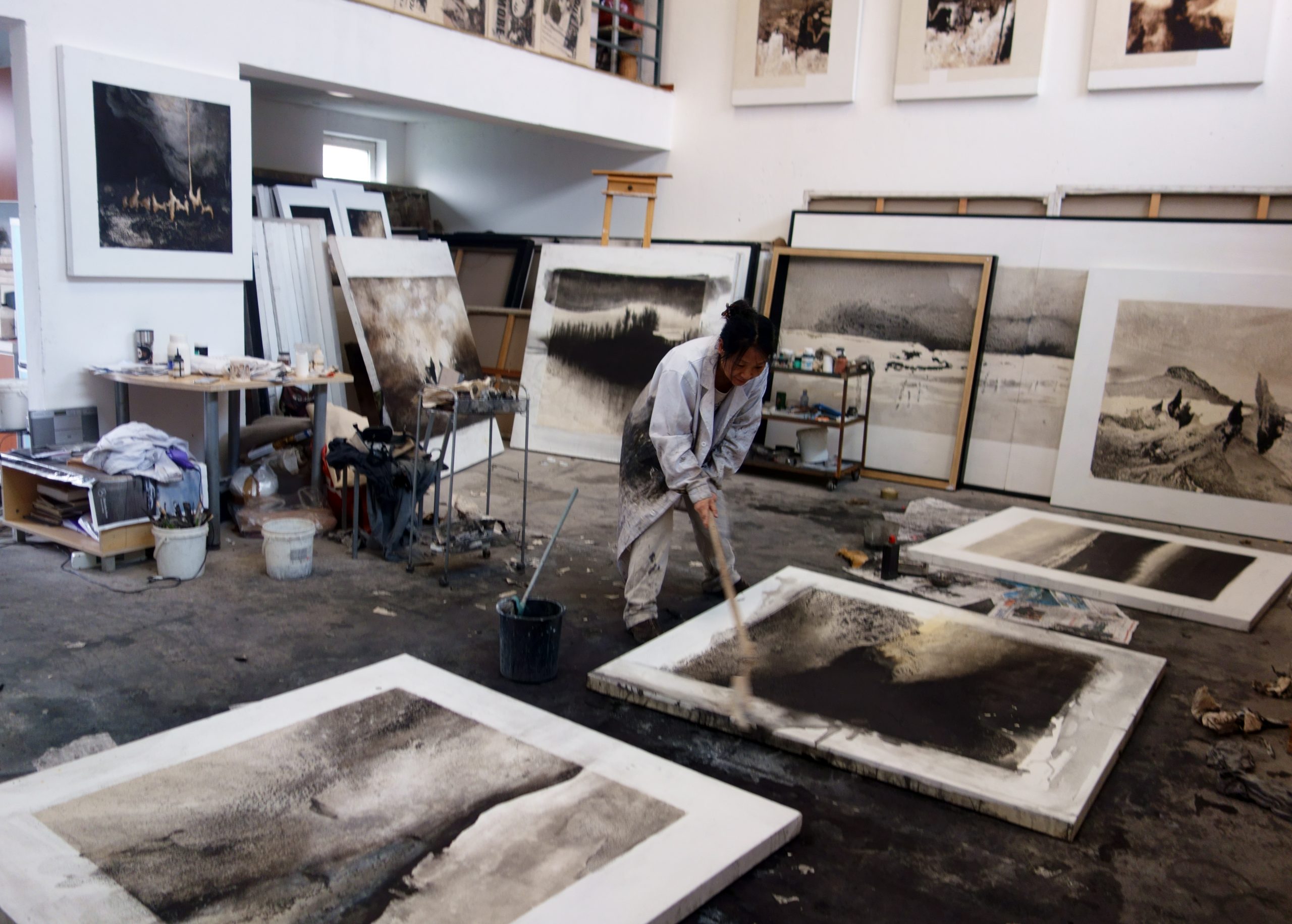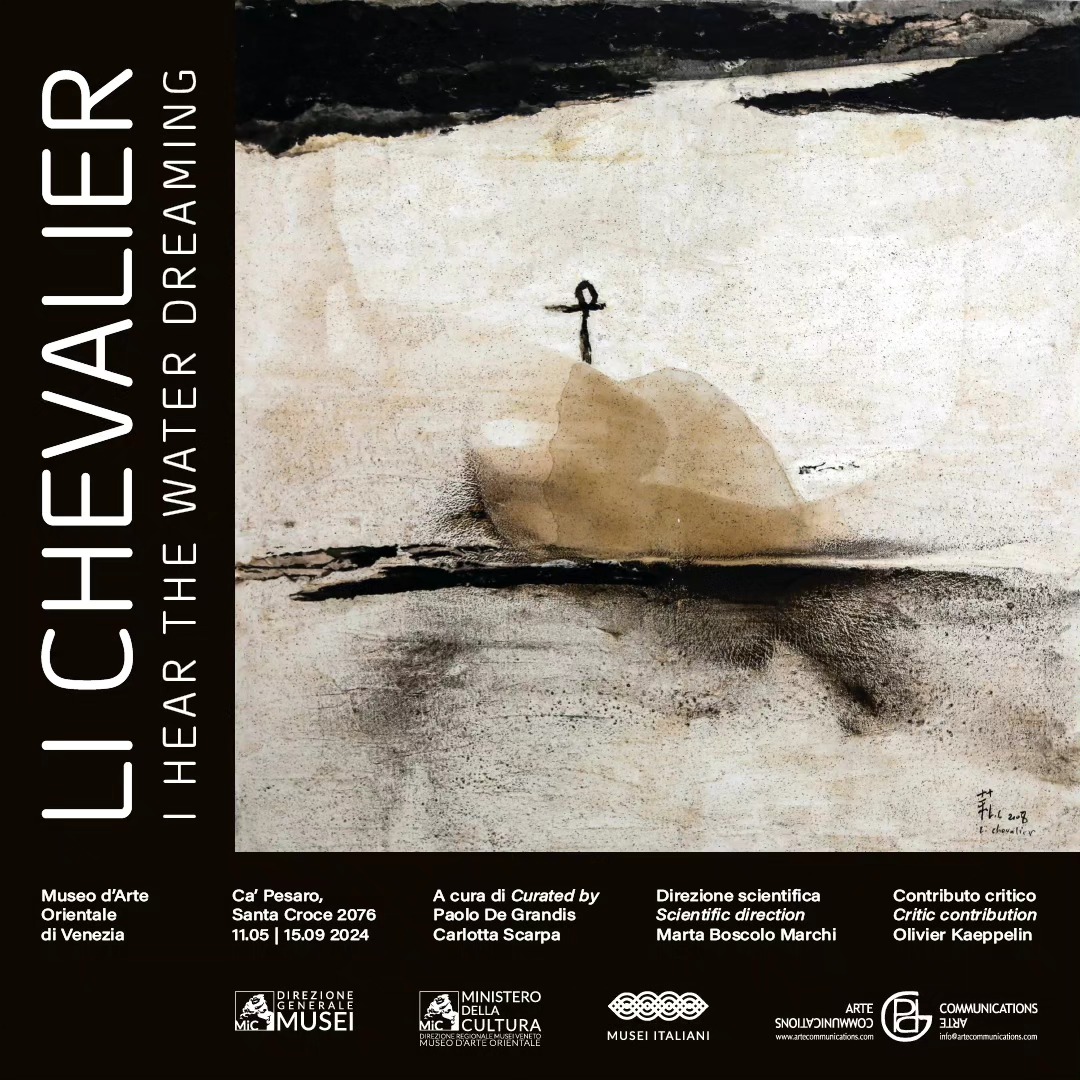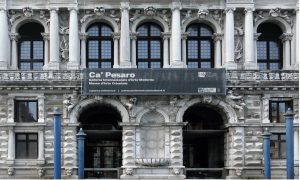
Museo d’Arte Oriental Venezia Ca Pesaro
“Art and technology are like places and legends. They are sometimes revisited with a grace that gives them another light, a second life.” Le Figaro.fr- Under the inspired eye of Li Chevalier
Amid the excitement of the 2024 Art Biennale, Venice’s Oriental Art Museum offers visitors an exceptional encounter with the creative universe of Franco-Chinese artist Li Chevalier. This monographic exhibition, which brings together a selection of some thirty of the artist’s major works, is for her a token of gratitude to Venice, the unique city she discovered in the early 90s, a city that decisively changed her trajectory.
In this imposing 17th-century Baroque palace on the Grand Canal, the exhibition is an in situ intervention in dialogue with the Museum’s collection, one of the largest collections of Japanese art from the Edo period (1603-1868) in Europe. The museum, which has been housed on the third floor of Ca’ Pesaro since 1928, now combines its collection of early Oriental artworks with new temporary exhibitions, such as that of Li Chevalier, with the academic contribution of French art critic and curator Olivier Kaeppelin.
Born in China, flourishing on European soil since the 80s, Sorbonnarde in Philosophy and singer in the choir of the Orchestre De Paris, it was in Venice that Li Chevalier took her first lesson in the Italian language.
Speaking Italian was not just a way of better interpreting bel canto, but above all a way of never returning to earth, once propelled into the orbit of creation, thanks to this encounter with Venice, with Italy and its art, which she discovered and whose beauty possessed and bewitched her. Li Chevalier then embarked on a series of study visits to Venice, then Florence and Rome, to learn classical painting, before completing her training in contemporary art at Central Saint Martins in London.
So ready, Li Chevalier chose to revisit Chinese ink painting. This return was a choice, to embody an innovative alliance of Chinese ink with the very essence of composition and material, of the support (canvas) so characteristic of the European pictorial approach. It was also a choice to confront an Eastern aesthetic with a vision of the world made up of doubt and redemption, humanism and solitude, which draws on the sources of Western philosophy. Le Figaro.fr- Under the inspired eye of Li Chevalier
Li Chevalier cannot create without putting music on a pedestal. The title of her exhibition “J’entends l’eau rêver” (I hear water dreaming) unsurprisingly refers to a musical piece by Toro Takemitzu. There is a direct parallel between the Francophile Japanese composer and the Franco-Chinese artist: both operate in vast “cultural spaces”, to the point of passionately absorbing influences from both the Western and Eastern worlds. Both develop a universal language while preserving a singularly oriental high color. Both artists extend their language to poetry, calligraphy and, above all, the concept of space/silence. In Takemitzu’s suggestive, suspended musical moments, we find Li Chevalier’s silent spatial backdrops.
In the climate of tension, mistrust and intolerance that darkens the contemporary sky, li Chevalier’s art offers us the fruit of a humanism sustained by an impulse of openness towards others, beyond borders and continents.
If the exhibition retraces a personal path, it is to better chisel out a version of “interculturality”, which deserves its own chapter in the history of 21st-century “Ink in Motion”, as written by artists of the Asian diaspora, drunk with freedom and encounters.





